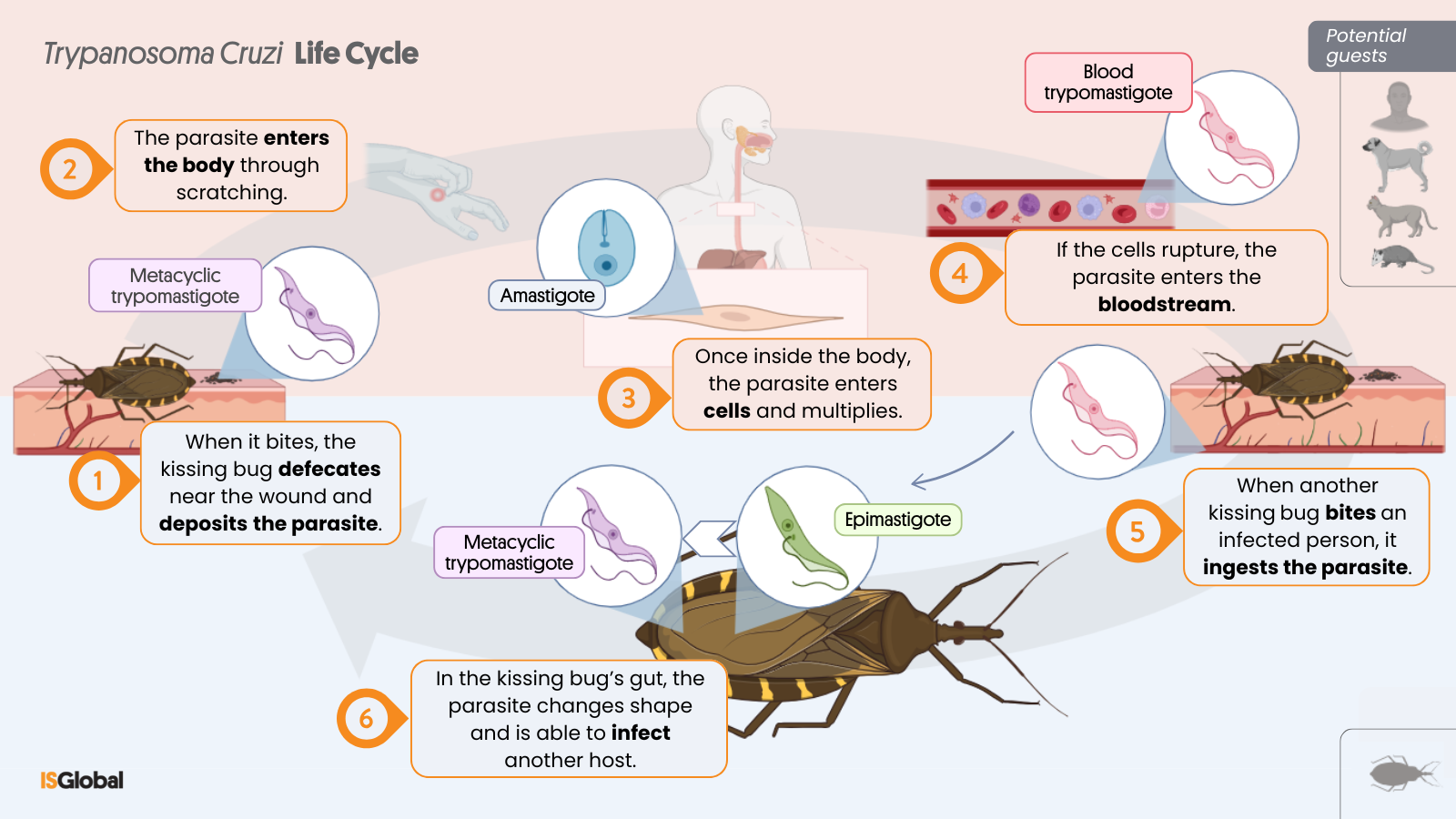Trypanosoma cruzi

What is Trypanosoma cruzi?
Trypanosoma cruzi is a protozoan parasite, meaning a microorganism that depends on a host to complete its life cycle and reproduce. It is the causative agent of Chagas disease, an infectious disease that spreads from animals to humans (zoonosis), and is endemic in several countries across the Americas.
Transmission
This protozoan parasite is mainly transmitted by triatomine insects, commonly known as kissing bugs, assassin bugs or by other local names such as vinchuca, chinche, or pito. It can also be transmitted through contaminated food, from mother to child during pregnancy or childbirth, and via blood transfusion or organ transplantation when the donor is infected with the parasite.
Life cycle
Trypanosoma cruzi has a complex life cycle involving two types of hosts: the triatomine insect (kissing bug) and humans or other mammals. It develops through several stages:
- The kissing bug bites and leaves the parasite on the skin
- The kissing bug feeds on the blood of humans or animals (such as dogs, cats, marsupials, or rodents) and defecates near the bite site. Its faeces contain the parasite in a form called the metacyclic trypomastigote.
- When the person scratches or touches the area, the parasite enters the body through the wound or through mucous membranes such as the eyes or mouth.
- The parasite invades the body’s cells
- Once inside the body, the trypomastigotes enter the cells and transform into amastigotes. Trypanosoma cruzi can infect many types of cells, particularly those in the immune system, nervous system, or muscle tissue.
- Inside the cells, the amastigotes multiply until the cell bursts, releasing new parasites that can infect other cells or enter the bloodstream. At this point, they are known as bloodstream trypomastigotes.
- The parasite is ingested by the kissing bug
- If another kissing bug bites the infected person, it will ingest the parasites present in the blood.
Inside the insect’s gut, the parasite changes into the epimastigote form. It then transforms into the infectious form (metacyclic trypomastigote), ready to infect a new host when the kissing bug feeds and defecates the parasite near the skin.
Chagas disease: Parasite life cycle in humans
READ MORE
COLLAPSE
- Landmark Study of Chagas Disease in Paraguay Supports Use of Rapid Tests to Improve Access to Diagnosis(ISGlobal, 2025)
- An Innovative Test to Diagnose Chagas Disease in Newborns(ISGlobal, 2024)
- Lipid Biomarkers May Improve Management of Chagas Disease(ISGlobal, 2024)
- Theseus in the Labyrinth and the Cure for Chagas Disease(ISGlobal, 2022)
- The Combined Use of Two Rapid Tests is Effective for Accurate Diagnosis of Chronic Chagas Disease in the Field(ISGlobal, 2019)

